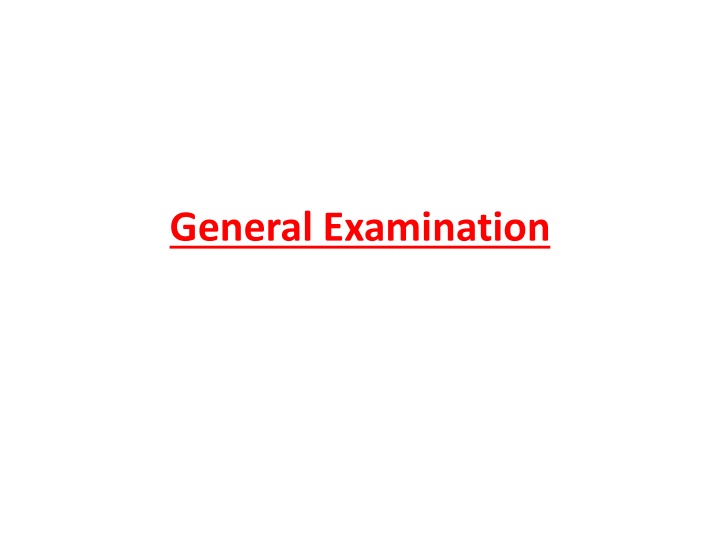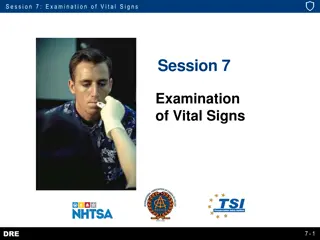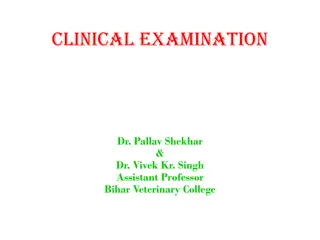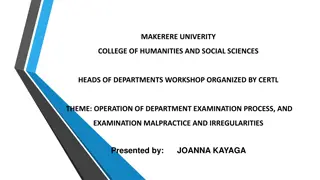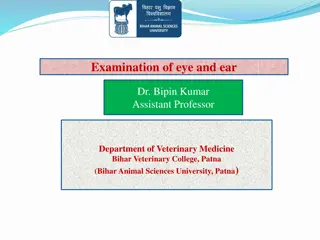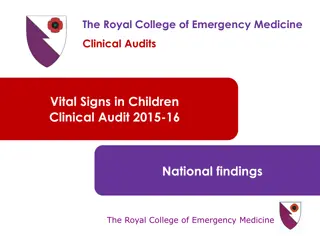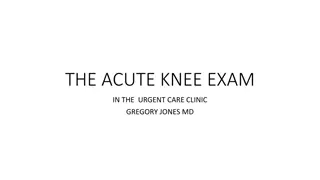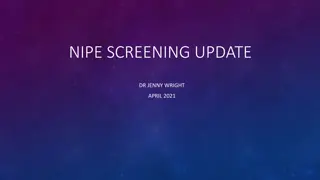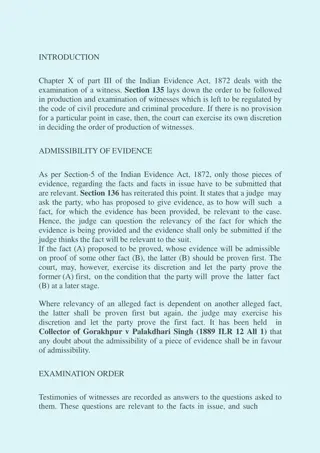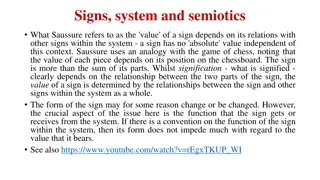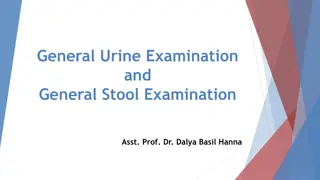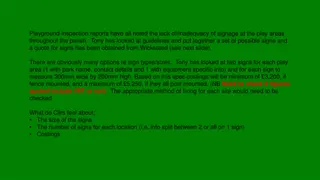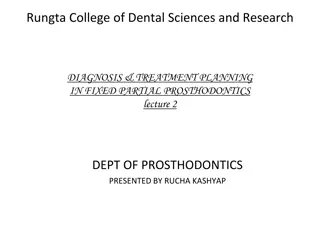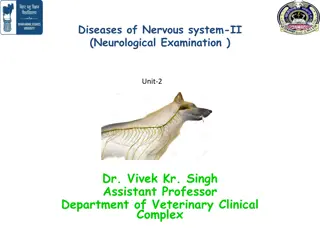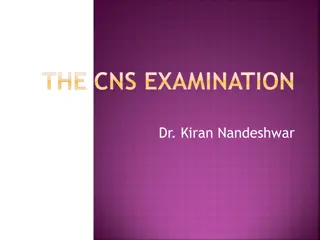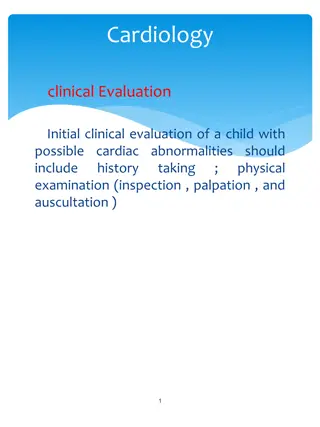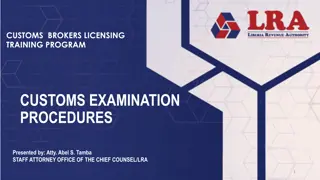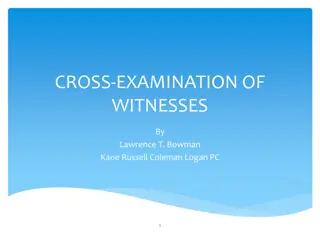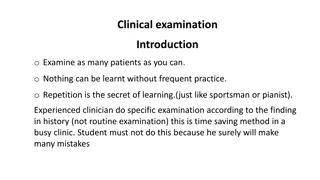General Examination: What to Examine and Vital Signs
The General Examination involves assessing various aspects such as general appearance, vital signs, head examination, neck examination, upper limb examination, lower limb examination, lymph node examination, and more. Vital signs include pulse rate, blood pressure, respiratory rate, and temperature. Head examination includes assessing facies, hair, eyes, nose, cheeks, mouth, and ears for signs of various conditions like Down syndrome, thalassemia, alopecia, jaundice, and more.
Download Presentation

Please find below an Image/Link to download the presentation.
The content on the website is provided AS IS for your information and personal use only. It may not be sold, licensed, or shared on other websites without obtaining consent from the author.If you encounter any issues during the download, it is possible that the publisher has removed the file from their server.
You are allowed to download the files provided on this website for personal or commercial use, subject to the condition that they are used lawfully. All files are the property of their respective owners.
The content on the website is provided AS IS for your information and personal use only. It may not be sold, licensed, or shared on other websites without obtaining consent from the author.
E N D
Presentation Transcript
What will I examine? General appearance. Vital signs. Head examination. Neck examination. Upper limb examination. Lower limb examination. Lymph node examination.
1. General appearance: . Conscious and orientation (GCS) . Cooperation . Mentality . Memory . Mood . Decubtus
: Glasgow coma scale (GCS) Eye Opening Best verbal response Best motor response 4- Spontaneous eye 5- Oriented 6- Follow commands opening 3- Eye opening on command 4- Gives confused answers 5- Localizes painful stimulus 2- Eye opens to painful 4- Non localizing movement to pain 3- Inappropriate response stimulus 1- No eye opening 2- Makes unintelligible 3- Abnormal flexion to pain noises 1- Makes no verbal responses 2- Abnormal extension to pain 1- Gives no motor response
Body Mass Index: Weight/height BMI <18,5 Underweight 18,5-24,9 Normal 25-29,9 Over weight 30-39,9 obese >40 Morbidly obese
: 2. Vital signs . Pulse . Blood pressure . Respiratory Rate ( Normal = 16-22) . Temperature ) 36,5-37,2)
Pulse: . Rate ( Normal = 60 100). tachycardia........>100 bradycardia......<60 . Rhythm (regular or irregular) . Volume (small or big) . Equality on both sides . Peripheral Pulsation . State of arterial wall
Blood Pressure: Blood Pressure Systolic mm hg (upper) Diastolic mm hg (lower) Less than 120 Normal Less than 80 120-139 Prehypertension 80-89 140-159 Hypertension stage 1 90-99 160 or higher Hypertension stage 2 100 or higher Higher than 180 Hypertension crisis Higher than 110
Head Examination: .Facies (Down syndrom , Thalasemia). .Hair( Alopecia) .Eye ( jaundice, Exophthalmous) .Nose and cheeks (Malar rash) .Mouth: odor, lips, tongue, teeth, Gums, oral cavity,Palate. .Ear .parotid
Neck Examination: . Trachea: central or shifted Mobile or fixed Tracheal tug (A.A, Campbell's sign) . Thyroid gland: Inspection palpation percaussion Auscultation
Carotid pulastion JVP Medial to sternomastoid muscle Lateral to sternomatoid muscle One peak Wavy pulastion Unaffected by posture Prominent on lying down Un affected by respiration Decrease by inspiration Better felt than seen Seen and not felt
. Lymph nodes: Circular .. Retropharyngeal tonsils submental submandibular preauricular postauricular occipital Vertical Superficial and deep groups
Upper Limbs: . Hand Examination S ( shape , sweating) T ( tremors , temperature) N ( nail, nodule) P ( pallor , palmer erythema) .skin 4s ( stria, scratch marks , scar, spider navi) purpra Ecchomosis . Axillary lymph nodes
Lower Limbs Examination . Oedema . Dorsalis Pedis . Post tibial . Lax calf muscles . Varicosities . Skin + ulcers . Pretibial Myxedema . Erythema nodsum
